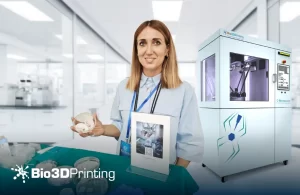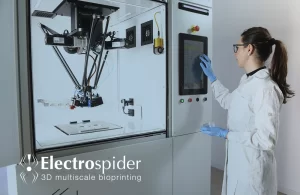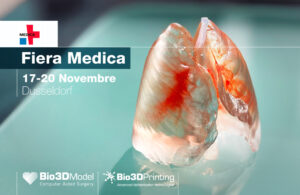AI in biomedical 3D printing: here is Electrospider 2.0

Thanks to the implantation of the latest generation of proprietary Artificial Intelligence, Electrospider thus becomes in fact an innovative tool for precision regenerative medicine as it integrates sophisticated algorithms that allow the IA to optimize the creation of the 3D digital model of the human tissue to be reproduced, thus eliminating all imperfections in the biological printing process and ensuring perfect reproduction from the patient’s original cells. The goal of Electrospider, in fact, is to create complex structures of entire human organs, completely changing the quality of life of patients, shortening the time of research (just think of the testing of a cure that, through the use of Electrospider, is now possible directly in the patient’s in vitro cells) and improving the working methods of hospitals and healthcare facilities.
Thanks to the extrusion system with the natural arachnid shape from which the name derives, Electrospider is able to release organic material on the printing surface reproducing the same workflow as a common 3D printer. Layer after layer the biostampante reproduces portions of human tissue "alive", developed from cells grown in vitro and extracted directly from the patient undergoing surgery or from donor subjects. This operation drastically reduces the waiting time for implantable material, as well as the risks associated with rejection, allowing the in-depth analysis of the samples thus collected for studies and research in various sectors. The new version "Electrospider 2.0" uses AI technology both at the construction level of the three-dimensional model of the affected organ, and for the printing process. In detail, the segmentation process that allows you to recreate the 3D digital model of the organ, or human tissue from a computed axial tomography (CT) or magnetic resonance imaging (MRI), uses in version 2.0 the absolute stabilization of the different shades of gray, borrowing the technologies of AI used to recreate the images of stars and galaxies from the photos of terrestrial or orbital telescopes. This proprietary technique, the result of development work in the Solidworld Group, represents a fundamental step to cut the time of total organ reconstruction, process requiring nanometric precision of the internal structure that only specially developed AI algorithms can guarantee. In addition, the final phase is the study to use AI algorithms to control the contemporary printing process of the support structure and the different cellular components of the tissues to be built or reconstructed. By doing so the final product will be totally error free.
Related posts

Il futuro di Electrospider – Intervista ad Aurora De Acutis, CEO di Bio3DPrinting
In questa intervista Aurora De Acutis racconta quali sono le attuali applicazioni di Electrospider e la sua visione futura dei trapianti con tessuti e organi biostampati.

Electrospider realizza un modello tracheale biomimetico
La biostampa 3D segna un nuovo passo verso la medicina rigenerativa

Medica 2025: Bio3DPrinting Brings Biofabrication to Düsseldorf
Bio3DPrinting, together with Bio3DModel, will be present as an exhibitor at the MEDICA 2025 fair, scheduled for November 17th to 20th at the Düsseldorf exhibition center.



